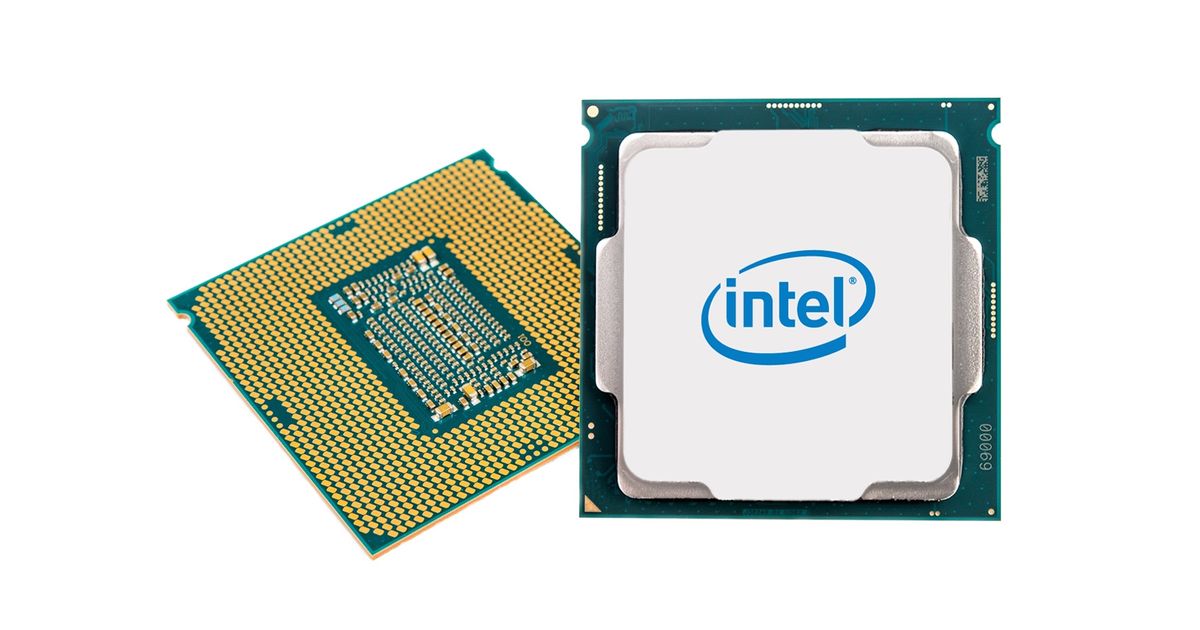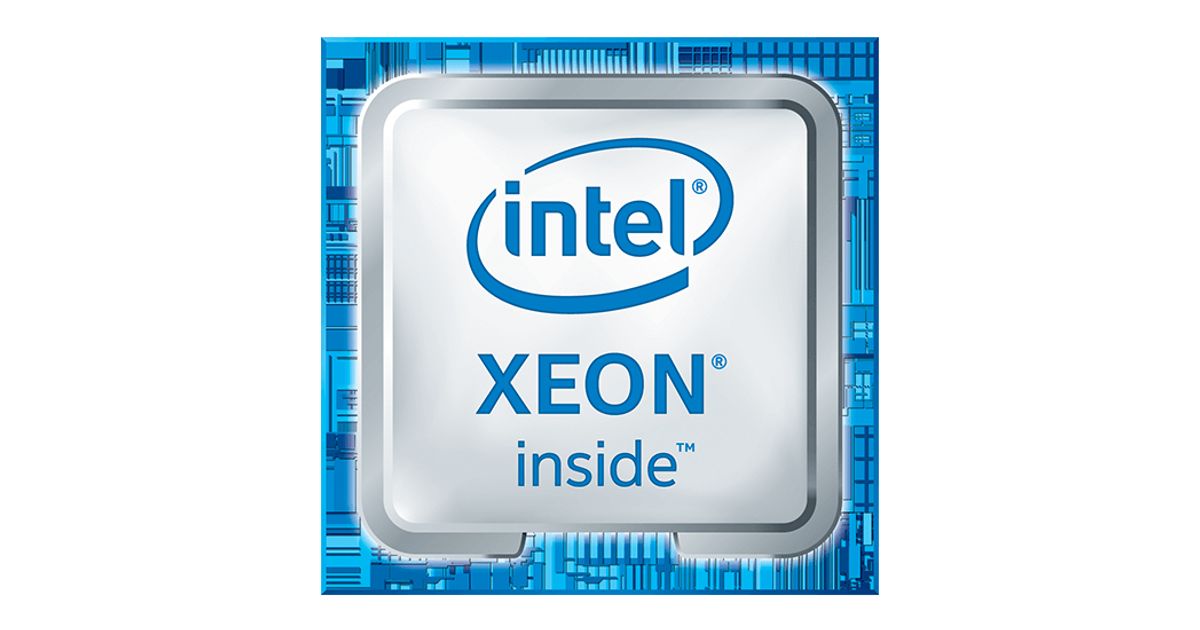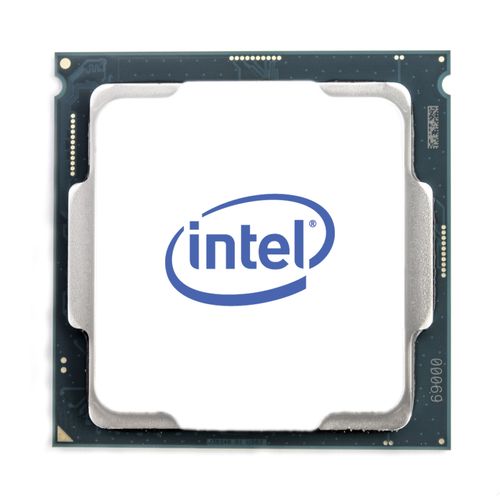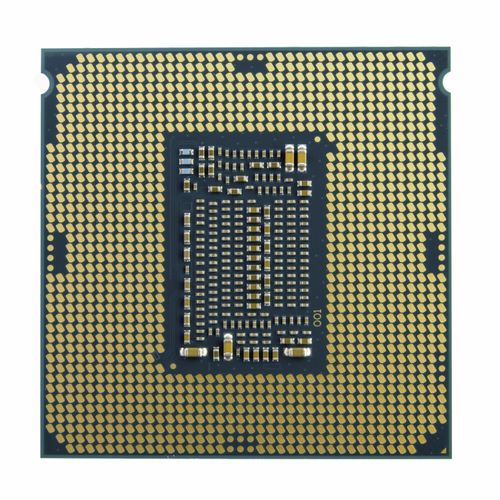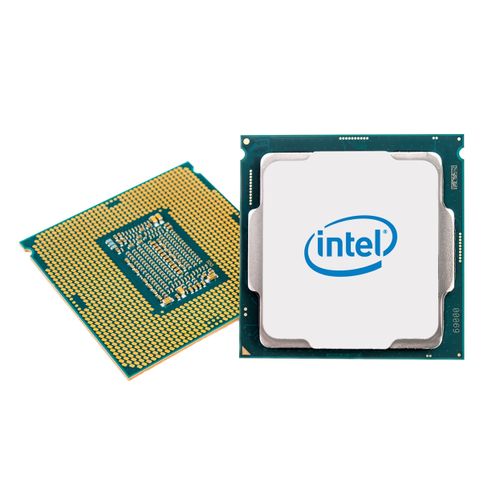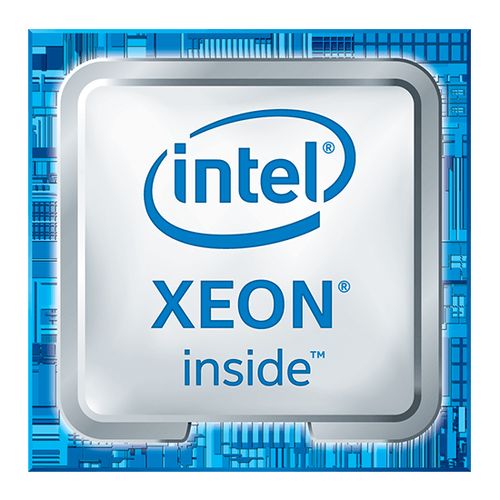For illustrative purpose only
Intel Xeon E-2234 processor 3.6 GHz 8 MB Smart Cache
Intel Xeon E-2234, Intel Xeon E, LGA 1151 (Socket H4), 14 nm, Intel, E-2234, 3.6 GHz
Read more...
Read more...
Product Information
| Information | |
|---|---|
| Manufacturer | Intel |
| Product code | 185711646 |
| EAN | 00675901973755 |
| Manufacturer part number | BX80708E2334 |
| Category | Processors |
| Processor | |
|---|---|
| Processor family | Intel Xeon E |
| Processor cores | 4 |
| Processor socket | LGA 1151 (Socket H4) |
| Processor lithography | 14 nm |
| Box | N |
| Cooler included | N |
| Processor manufacturer | Intel |
| Processor model | E-2234 |
| Processor base frequency | 3.6 GHz |
| Processor operating modes | 64-bit |
| Processor threads | 8 |
| System bus rate | 8 GT/s |
| Processor boost frequency | 4.8 GHz |
| Processor cache | 8 MB |
| Processor cache type | Smart Cache |
| Thermal Design Power (TDP) | 71 W |
| Processor codename | Coffee Lake |
| Maximum internal memory supported by processor | 128 GB |
| Maximum number of PCI Express lanes | 16 |
| PCI Express slots version | 3.0 |
| PCI Express configurations | 1x16, 2x8, 1x8+2x4 |
| Tjunction | 100 °C |
| Design | |
|---|---|
| Component for | Server/workstation |
| Product type | Processor |
| Processor special features | |
|---|---|
| Processor ARK ID | 191039 |
| Execute Disable Bit | Y |
| Idle States | Y |
| Thermal Monitoring Technologies | Y |
| Supported instruction sets | SSE4.1, SSE4.2, AVX 2.0 |
| CPU configuration (max) | 1 |
| Embedded options available | N |
| Intel® Hyper Threading Technology (Intel® HT Technology) | Y |
| Intel® Turbo Boost Technology | 2.0 |
| Intel® Quick Sync Video Technology | N |
| Intel® InTru™ 3D Technology | N |
| Intel® Clear Video HD Technology (Intel® CVT HD) | N |
| Intel® AES New Instructions (Intel® AES-NI) | Y |
| Enhanced Intel SpeedStep Technology | Y |
| Intel Trusted Execution Technology | Y |
| Intel® Memory Protection Extensions (Intel® MPX) | Y |
| Intel® Turbo Boost Technology 2.0 frequency | 4.8 GHz |
| Intel® Transactional Synchronization Extensions | Y |
| Intel VT-x with Extended Page Tables (EPT) | Y |
| Intel® Secure Key | Y |
| Intel TSX-NI | Y |
| Intel® OS Guard | Y |
| Intel Clear Video Technology | N |
| Intel Software Guard Extensions (Intel SGX) | Y |
| Intel 64 | Y |
| Intel Virtualization Technology (VT-x) | Y |
| Intel Virtualization Technology for Directed I/O (VT-d) | Y |
| Intel® Optane™ Memory Ready | Y |
| Intel® Boot Guard | Y |
| Intel® vPro™ Platform Eligibility | Y |
| Processor package size | 37.5mm x 37.5mm |
| Memory | |
|---|---|
| Memory channels | Dual-channel |
| Memory types supported by processor | DDR4-SDRAM |
| Memory clock speeds supported by processor | 2666 MHz |
| ECC | Y |
| Supported memory types | DDR4-SDRAM |
| Maximum internal memory | 128 GB |
| Graphics | |
|---|---|
| On-board graphics adapter | N |
| Discrete graphics adapter | N |
| On-board graphics adapter model | Not available |
| Discrete graphics adapter model | Not available |
| On-board graphics adapter 4K support | N |
| Features | |
|---|---|
| Market segment | Server |
| Scalability | 1S |
| PCI Express CEM revision | 3.0 |
| Harmonized System (HS) code | 85423119 |
| Performance | |
|---|---|
| Export Control Classification Number (ECCN) | 5A992C |
| Commodity Classification Automated Tracking System (CCATS) | G077159 |
| Operational conditions | |
|---|---|
| Tcase | 69.3 °C |
| Packaging data | |
|---|---|
| Package type | Retail box |
| Other features | |
|---|---|
| Launch date | Q2'19 |
| Status | Launched |
| Maximum memory | 128 GB |
| Graphics output | N/A |
| Other information | |
|---|---|
| Maximum resolution & refresh rate (DisplayPort) | N/A |
| Bus speed | 8 GT/s |
| Processor ID | N/A |
Product Description
Intel® Optane™ Memory Supported
Intel® Optane™ memory is a revolutionary new class of non-volatile memory that sits in between system memory and storage to accelerate system performance and responsiveness. When combined with the Intel® Rapid Storage Technology Driver, it seamlessly manages multiple tiers of storage while presenting one virtual drive to the OS, ensuring that data frequently used resides on the fastest tier of storage. Intel® Optane™ memory requires specific hardware and software configuration.
Intel® Turbo Boost Technology
Intel® Turbo Boost Technology dynamically increases the processor's frequency as needed by taking advantage of thermal and power headroom to give you a burst of speed when you need it, and increased energy efficiency when you don’t.
Intel® vPro™ Platform Eligibility
Intel® vPro™ Technology is a set of security and manageability capabilities built into the processor aimed at addressing four critical areas of IT security: 1) Threat management, including protection from rootkits, viruses, and malware 2) Identity and web site access point protection 3) Confidential personal and business data protection 4) Remote and local monitoring, remediation, and repair of PCs and workstations.
Intel® Hyper-Threading Technology
Intel® Hyper-Threading Technology (Intel® HT Technology) delivers two processing threads per physical core. Highly threaded applications can get more work done in parallel, completing tasks sooner.
Intel® Virtualization Technology (VT-x)
Intel® Virtualization Technology (VT-x) allows one hardware platform to function as multiple “virtual” platforms. It offers improved manageability by limiting downtime and maintaining productivity by isolating computing activities into separate partitions.
Intel® Virtualization Technology for Directed I/O (VT-d)
Intel® Virtualization Technology for Directed I/O (VT-d) continues from the existing support for IA-32 (VT-x) and Itanium® processor (VT-i) virtualization adding new support for I/O-device virtualization. Intel VT-d can help end users improve security and reliability of the systems and also improve performance of I/O devices in virtualized environments.
Intel® VT-x with Extended Page Tables (EPT)
Intel® VT-x with Extended Page Tables (EPT), also known as Second Level Address Translation (SLAT), provides acceleration for memory intensive virtualized applications. Extended Page Tables in Intel® Virtualization Technology platforms reduces the memory and power overhead costs and increases battery life through hardware optimization of page table management.
Intel® TSX-NI
Intel® Transactional Synchronization Extensions New Instructions (Intel® TSX-NI) are a set of instructions focused on multi-threaded performance scaling. This technology helps make parallel operations more efficient via improved control of locks in software.
Intel® 64
Intel® 64 architecture delivers 64-bit computing on server, workstation, desktop and mobile platforms when combined with supporting software.¹ Intel 64 architecture improves performance by allowing systems to address more than 4 GB of both virtual and physical memory.
Instruction Set
An instruction set refers to the basic set of commands and instructions that a microprocessor understands and can carry out. The value shown represents which Intel’s instruction set this processor is compatible with.
Instruction Set Extensions
Instruction Set Extensions are additional instructions which can increase performance when the same operations are performed on multiple data objects. These can include SSE (Streaming SIMD Extensions) and AVX (Advanced Vector Extensions).
Idle States
Idle States (C-states) are used to save power when the processor is idle. C0 is the operational state, meaning that the CPU is doing useful work. C1 is the first idle state, C2 the second, and so on, where more power saving actions are taken for numerically higher C-states.
Enhanced Intel SpeedStep® Technology
Enhanced Intel SpeedStep® Technology is an advanced means of enabling high performance while meeting the power-conservation needs of mobile systems. Conventional Intel SpeedStep® Technology switches both voltage and frequency in tandem between high and low levels in response to processor load. Enhanced Intel SpeedStep® Technology builds upon that architecture using design strategies such as Separation between Voltage and Frequency Changes, and Clock Partitioning and Recovery.
Thermal Monitoring Technologies
Thermal Monitoring Technologies protect the processor package and the system from thermal failure through several thermal management features. An on-die Digital Thermal Sensor (DTS) detects the core's temperature, and the thermal management features reduce package power consumption and thereby temperature when required in order to remain within normal operating limits.
Intel® Optane™ memory is a revolutionary new class of non-volatile memory that sits in between system memory and storage to accelerate system performance and responsiveness. When combined with the Intel® Rapid Storage Technology Driver, it seamlessly manages multiple tiers of storage while presenting one virtual drive to the OS, ensuring that data frequently used resides on the fastest tier of storage. Intel® Optane™ memory requires specific hardware and software configuration.
Intel® Turbo Boost Technology
Intel® Turbo Boost Technology dynamically increases the processor's frequency as needed by taking advantage of thermal and power headroom to give you a burst of speed when you need it, and increased energy efficiency when you don’t.
Intel® vPro™ Platform Eligibility
Intel® vPro™ Technology is a set of security and manageability capabilities built into the processor aimed at addressing four critical areas of IT security: 1) Threat management, including protection from rootkits, viruses, and malware 2) Identity and web site access point protection 3) Confidential personal and business data protection 4) Remote and local monitoring, remediation, and repair of PCs and workstations.
Intel® Hyper-Threading Technology
Intel® Hyper-Threading Technology (Intel® HT Technology) delivers two processing threads per physical core. Highly threaded applications can get more work done in parallel, completing tasks sooner.
Intel® Virtualization Technology (VT-x)
Intel® Virtualization Technology (VT-x) allows one hardware platform to function as multiple “virtual” platforms. It offers improved manageability by limiting downtime and maintaining productivity by isolating computing activities into separate partitions.
Intel® Virtualization Technology for Directed I/O (VT-d)
Intel® Virtualization Technology for Directed I/O (VT-d) continues from the existing support for IA-32 (VT-x) and Itanium® processor (VT-i) virtualization adding new support for I/O-device virtualization. Intel VT-d can help end users improve security and reliability of the systems and also improve performance of I/O devices in virtualized environments.
Intel® VT-x with Extended Page Tables (EPT)
Intel® VT-x with Extended Page Tables (EPT), also known as Second Level Address Translation (SLAT), provides acceleration for memory intensive virtualized applications. Extended Page Tables in Intel® Virtualization Technology platforms reduces the memory and power overhead costs and increases battery life through hardware optimization of page table management.
Intel® TSX-NI
Intel® Transactional Synchronization Extensions New Instructions (Intel® TSX-NI) are a set of instructions focused on multi-threaded performance scaling. This technology helps make parallel operations more efficient via improved control of locks in software.
Intel® 64
Intel® 64 architecture delivers 64-bit computing on server, workstation, desktop and mobile platforms when combined with supporting software.¹ Intel 64 architecture improves performance by allowing systems to address more than 4 GB of both virtual and physical memory.
Instruction Set
An instruction set refers to the basic set of commands and instructions that a microprocessor understands and can carry out. The value shown represents which Intel’s instruction set this processor is compatible with.
Instruction Set Extensions
Instruction Set Extensions are additional instructions which can increase performance when the same operations are performed on multiple data objects. These can include SSE (Streaming SIMD Extensions) and AVX (Advanced Vector Extensions).
Idle States
Idle States (C-states) are used to save power when the processor is idle. C0 is the operational state, meaning that the CPU is doing useful work. C1 is the first idle state, C2 the second, and so on, where more power saving actions are taken for numerically higher C-states.
Enhanced Intel SpeedStep® Technology
Enhanced Intel SpeedStep® Technology is an advanced means of enabling high performance while meeting the power-conservation needs of mobile systems. Conventional Intel SpeedStep® Technology switches both voltage and frequency in tandem between high and low levels in response to processor load. Enhanced Intel SpeedStep® Technology builds upon that architecture using design strategies such as Separation between Voltage and Frequency Changes, and Clock Partitioning and Recovery.
Thermal Monitoring Technologies
Thermal Monitoring Technologies protect the processor package and the system from thermal failure through several thermal management features. An on-die Digital Thermal Sensor (DTS) detects the core's temperature, and the thermal management features reduce package power consumption and thereby temperature when required in order to remain within normal operating limits.


